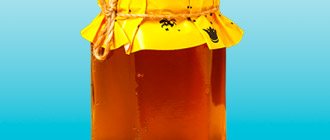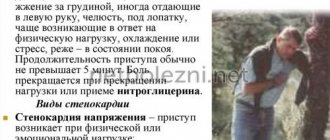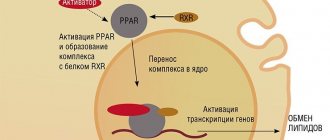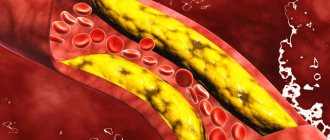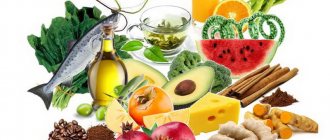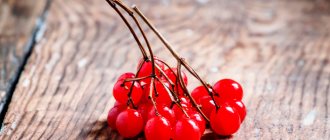During a hospital stay, treatment of a patient with a heart attack should consist of strict adherence to all doctor's recommendations. Folk and home remedies are not able to help during this period and, moreover, they are strictly prohibited. It is better to postpone them until later, for the period after discharge from the hospital. From the moment the patient is at home, a fairly long period of rehabilitation begins, during which medical prescriptions can be supplemented with folk remedies. However, is such an addition to therapy advisable?
Classification of heart attack
There are several classifications of the disease.
By stages of development there are:
First stage heart attack . This is the stage of the onset of myocardial damage. From the appearance of the first signs of a heart attack to the beginning of the death of part of the heart muscle, 15-120 minutes pass.
Second stage heart attack . This is an acute period of the disease, which lasts from two to ten days.
Stage three heart attack . Subacute form of the disease. Lasts 7-28 days.
Stage four heart attack . This is a period of scarring during which the heart adapts to continue working despite the tissue damaged by the scar. Complete scar formation lasts 3-5 months.
Based on the size of the lesion, a heart attack can be:
- small-focal – a small part of the heart muscle is affected;
- macrofocal - tissue necrosis is observed throughout the myocardium.
Depending on the frequency of development, a heart attack can be:
- primary;
- recurrent (occurs within two months after the first incident);
- repeated (occurs more than two months after the first heart attack).
Based on the depth of damage to the heart muscle, the following types of infarction are distinguished:
- subepicardial – the outer lining of the heart is affected;
- subendocardial - the inner lining of the heart is affected;
- intramural – the entire myocardium is affected;
- transmural – through-and-through myocardial damage is observed.
Depending on the presence of complications, a heart attack can be uncomplicated or complicated.
according to location :
- right ventricle;
- left ventricle.
By location of pain:
- Typical form. Pain occurs in the chest.
- Atypical forms:
- painless;
- abdominal (abdominal pain, vomiting, nausea occur, the clinical picture resembles gastrointestinal pathologies);
- edematous (swelling appears throughout the body);
- arrhythmic (tachycardia appears, heart rhythm fails);
- cerebral (headache, impaired consciousness, dizziness);
- asthmatic (cyanosis of the mucous membranes and skin, shortness of breath, suffocation, symptoms reminiscent of respiratory diseases).
Improving heart function using folk methods
- Effective folk remedies for myocardial infarction
It has been scientifically proven that the heart muscle suffers from a lack of potassium ions. Therefore, a variety of problems arise that lead to the manifestation of myocardial infarction. So, in order to prevent this from happening again, it will be necessary to take care of normalizing metabolism. And it is best to do this with the help of traditional medicine that is completely natural in origin, and not drink handfuls of pills, which will also damage your liver!
So, the following ingredients will be needed:
- 500 g of the most common bananas (peeled) - these fruits contain the highest concentration of Potassium;
- 100 g butter, as a solvent (so that all beneficial substances are better absorbed)
- 2 tablespoons apple cider vinegar.
Preparing this mixture will not be difficult. All you need to do is take all the ingredients and mix them in one enamel pan. The only thing is that it will be best if you mince the bananas and then add oil. Mix thoroughly, add apple cider vinegar and heat in a water bath for 10 minutes. That's it, the folk remedy for restoring the heart muscle is ready! To achieve the desired results in the shortest possible time, it will be enough to consume 5 tablespoons of this mixture three times a day. Repeat the course of treatment four times a year. If you follow the instructions, you will forget about heart problems!
Causes of heart attack
A heart attack occurs when blood flow in the coronary artery is suddenly disrupted, blood stops flowing into the myocardium and part of it begins to die. The most common cause of blood flow disturbance is thromboembolism, which occurs against the background of atherosclerosis.
In rare cases, a heart attack is a complication of any other pathological conditions of the body (infectious endocarditis, trauma and abnormal development of the coronary arteries, and a number of others).
There are a number of factors that can trigger the development of the disease. These include:
- high blood pressure;
- hyperlipoproteinemia;
- sedentary lifestyle;
- unhealthy diet leading to the development of obesity;
- age - the likelihood of a heart attack increases in people over 55 years of age;
- diabetes;
- bad habits;
- male gender;
- hereditary predisposition - if close relatives have been diagnosed with a heart attack or ischemic heart disease, this increases the risk of developing the disease.
Symptoms of a heart attack
In most cases, the clinical picture of a heart attack is quite pronounced and characteristic. However, it should be remembered that there are atypical forms of the disease that can manifest themselves in different ways.
The main symptom of a heart attack is severe pain. It is burning, dagger-like, localized behind the sternum, and can radiate to the left arm, shoulder blade, and lower jaw.
Physical activity does not always contribute to the development of a heart attack. Quite often, a heart attack begins at night, at rest. It is necessary to differentiate myocardial infarction from an attack of angina.
Both conditions have a similar clinical picture, but unlike angina, pain during a heart attack does not stop after taking nitroglycerin and persists for more than half an hour. If the above symptoms appear, you must immediately call an ambulance and provide first aid to the patient.
Here are the basic rules, the observance of which can help save a person’s life:
- the patient is placed on a flat surface, the head is slightly raised, a nitroglycerin tablet and an aspirin tablet are given under the tongue, which must be chewed;
- In addition, the patient is given an analgin tablet, 60 drops of valocordin, 2 panangin tablets, and a mustard plaster is placed on the heart area.
Recovery after recurrent myocardial infarction
Ingredients:
- Birch buds in the amount of 200 g;
- Boiled water 500 ml.
Fill the birch buds with water (boiling water), let it brew for several hours, strain and drink 1 glass three times a day for a year. No one has yet come up with a more effective remedy!
Hurry up to share this information with your friends! Perhaps someone has a relative or friend who needs rehabilitation after a myocardial infarction. Your advice in this case will come in handy; you will be able to selflessly help a person!
Diagnosis of heart attack
There are three main indicators on the basis of which the diagnosis of myocardial infarction is made:
- Characteristic symptoms . During a heart attack, the patient experiences severe chest pain that lasts more than 30 minutes and is not relieved by taking nitroglycerin. The patient complains of lack of air, suffocation, cold sweat, sudden weakness, vomiting, nausea, decreased blood pressure, and fear of death.
- Changes in laboratory parameters . The number of cardiomyocytes in the blood increases, which indicates myocardial damage.
- Characteristic changes on the ECG.
Treatment options
Myocardial infarction is a serious disease, against which modern medicine is sometimes powerless. Is it possible to hope to improve the condition of a patient who has had a heart attack using traditional medicine? It is possible if you use them wisely, in a timely manner and do not count on super results.
Medicines used to treat myocardial infarction at home must either have medicinal properties (herbal medicine) or be a source of vitamins and other substances necessary for the full restoration and functioning of the heart muscle (the use of cereals and food). All of these remedies can be considered a useful addition to the main treatment, but it is still better to use them only after consulting a doctor.
Treatment of heart attack (classical medicine)
If a heart attack is suspected, the patient is taken to the intensive care unit for a course of intensive therapy. The following therapeutic measures are carried out in the hospital:
- administering thrombolytic drugs to the patient, which can dissolve a fresh thrombus in the coronary artery and quickly restore blood supply to the myocardium;
- pain relief with narcotic analgesics;
- carrying out antiarrhythmic treatment;
- intravenous administration of nitrates to dilate blood vessels;
- taking medications that prevent thrombosis.
Methods of surgical treatment of infarction - coronary artery bypass grafting and stenting, balloon angioplasty.
Traditional medicine for heart attack and pre-heart attack
There are many folk ways to alleviate the condition of a person in a pre-infarction state or a patient after a heart attack. Like medications, traditional methods for heart attack help improve cardiac circulation, relieve vascular spasm and eliminate the causes of blockage. It is also very important to remain as calm as possible in the post- and pre-infarction state, so you can additionally take sedative herbal infusions.
Garlic prevents heart attack and blood clots
Garlic contains achoene, a substance superior to aspirin in its anticoagulant effect. Due to this, the formation of atherosclerotic plaques is suppressed, the risk of their sticking together and attaching to the walls of blood vessels is reduced.
There are certain rules when treating with garlic:
- Under no circumstances should you consume garlic immediately after a heart attack, only during the period of remission;
- Adhere to the optimal dosage, consume 1-2 cloves per day.
Garlic infusion recipe:
Take 2 cloves of garlic, cut them into thin slices and pour 1 tbsp. water at night. Leave for 12 hours. Drink in the morning and prepare a new infusion to drink in the evening. Take for a month. After the course of treatment, check your blood test, it should be within normal limits.
Herbs
Herbs are used in treatment after a heart attack for several months. They contain many useful substances that do not cause side effects.
When preparing herbal infusions, you must strictly adhere to the recipe.
Take the following herbs in equal quantities:
Astragalus, wild rosemary, immortelle, valerian, clover, white willow bark, motherwort, cudweed, fennel. Mix, take 1 tbsp. collection and pour 1 tbsp. boiling water Infuse under a closed lid for 5-6 hours. Take ¼ cup 4 times a day during the day.
Birch buds
Birch buds relieve inflammation, remove excess moisture, purify the blood and accelerate regeneration. In addition to the buds, leaves and juice are used.
Decoction of birch buds:
Pour boiling water (200 ml) over birch buds (10g), cook for 15 minutes, wait until they cool and strain. Take 120 ml between meals.
Birch bud tincture:
Take 1 tbsp. kidneys and pour 0.5 liters of alcohol, put in a dark place for 14 days. Shake daily. Take 2-3 r. per day 15 ml.
Mumiyo
An aqueous solution of mumiyo improves myocardial nutrition and restores the rhythm of contractions. Treats heart pathologies.
Take before meals. Start taking mumiyo with 13 drops of a 2% solution, gradually increase the dosage to 40 drops (1 tsp). The course is 2 weeks, then a 2 week break. There are 5 courses in total.
Valerian
Sedative herb. You can prepare an infusion from valerian alone, or you can prepare a collection of herbs.
The collection is prepared from an equal amount of herbs: valerian, angelica, calendula, lavender and sage. 120 g of collection is poured into 1 liter. boiled water, close tightly and leave to infuse overnight. In the morning, strain and drink for 2 months, 1/3 cup 2p. in a day.
Hawthorn
Hawthorn infusion reduces nervous excitability and stabilizes heart function. To prepare it, 30 g of fruits are crushed and poured with 1 tbsp. boiled water. Strain the cooled broth and take it in the morning immediately after sleep and in the evening before bed in the amount of 0.25 liters.
Motherwort
Motherwort infusion increases the effectiveness of both antiarrhythmic and anticonvulsant medications. 30 g of crushed fruits pour 1 tbsp. boiling water Strain. Take 3-4 times a day, 120 ml.
Sprouted wheat
Sprouted wheat contains many useful microelements. It can be consumed both in pure form and as an addition to main dishes. Daily dose 30 g.
Honey
Due to the high glucose content in honey, coronary vessels dilate and nutrition of the heart muscle improves.
- Dried apricots, nut kernels, raisins, 100 g each, chop and pour 100 ml. honey Take 2-3 r. per day 1 tbsp.
- Rowan 1 kg. grind in a meat grinder and pour in 2 liters. honey Take 30g. in a day.
Include more fresh fruits, freshly squeezed juices, and vegetables in your menu to reduce the risk of cholesterol plaques. The most effective are cranberries, citrus fruits (with the exception of grapefruit), apples and chokeberries.
Lemon zest has a positive effect on blood vessels due to the content of essential oils. You just need to chew it thoroughly.
Chokeberry with honey 1:2 also works well, take 1 tbsp during the day.
To reduce the risk of arrhythmia, enrich your diet with foods high in magnesium and potassium. These are walnuts and dried apricots.
Eat a mixture of walnuts (100 g) with honey (2 tbsp) daily and consume in 3 divided doses. This way you will replenish your body with magnesium.
But there is a lot of potassium in dried apricots. Eat 100-150 g of dried apricots per day and strengthen your heart muscle.
It is very important after a heart attack to consume Omega-3 polyunsaturated fatty acids, which are found in flax seeds, chia seeds, walnuts, sea fish, soybean and flaxseed oil.
Phytotherapy
Treatment of myocardial infarction with herbs involves the use of medicinal plants that are beneficial for the heart and blood vessels. Basically, they help remove excess fluid from the body, eliminate vascular spasm, lower blood pressure, lower cholesterol levels, and also have a sedative effect. One of the most used and well-known plants for the treatment of heart attack is hawthorn, which simultaneously possesses all of the listed properties.
During the recovery period after a heart attack, it is taken in the form of an infusion of fruits. To prepare it, pour 1 tablespoon of raw material into 1 cup of boiling water, leave for 30 minutes, filter and drink 0.5 cups in the morning and evening. However, hawthorn is far from the only phytotherapeutic remedy for the treatment of myocardial infarction. The list of herbs that have the desired properties is quite wide.
Thus, motherwort reduces blood pressure and has a calming effect, corn silk reduces blood cholesterol levels. Mountain arnica lowers cholesterol and dilates blood vessels, calendula officinalis normalizes high blood pressure, has an analgesic and calming effect. Collections from these and other medicinal herbs have a complex effect and are often used to treat a heart attack (or rather, during rehabilitation after it) and to prevent its complications.
Prevention of heart attack
The main measures to prevent heart attack are:
- giving up a sedentary lifestyle, daily walking, physical exercise;
- compliance with the work and rest regime;
- avoiding stress;
- proper nutrition, inclusion in the diet of foods rich in fiber, vitamins and microelements, exclusion of fast food and other junk food;
- weight control, preventing the development of obesity;
- hardening the body, strengthening the immune defense;
- timely treatment of somatic diseases and gastrointestinal pathologies;
- regular sanitation of foci of chronic infection in the body;
- rejection of bad habits;
- taking prophylactic dosages of drugs that thin the blood and prevent the development of atherosclerosis;
- control of blood pressure, sugar and cholesterol levels;
- Regular preventive examinations, ECG - this will help to identify possible heart problems at an early stage, which will significantly facilitate subsequent treatment and improve the prognosis.
